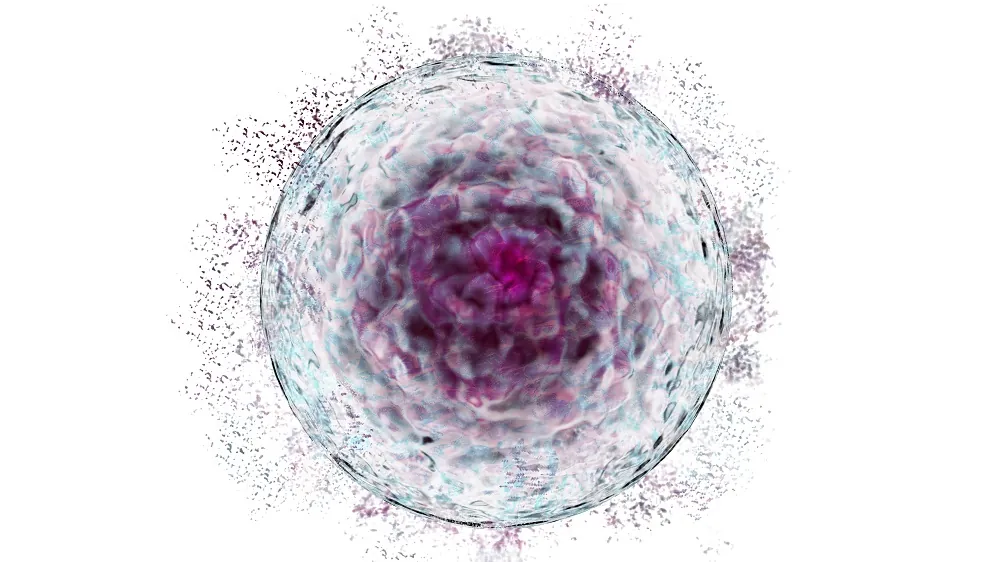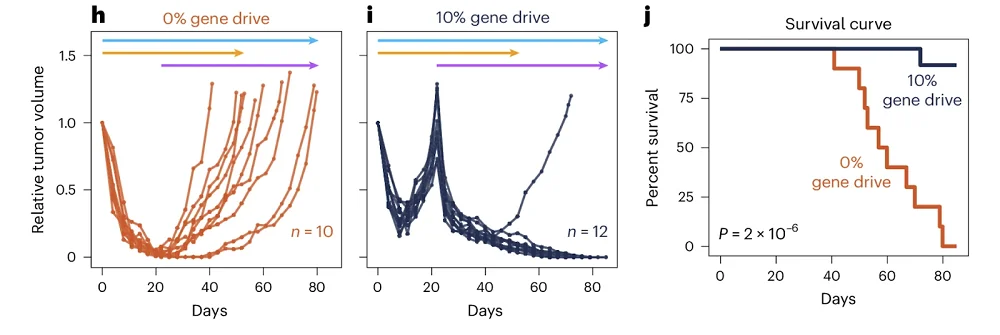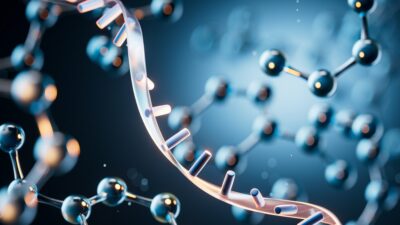Scientists Eliminate Cancer Using Evolutionary Principles
- The modified cancer cells can outcompete the original ones.

A new study describes a method of genetically modifying a fraction of tumor cells, programming them to self-destruct and take therapy-resistant cells with them [1].
Resisting the resistance
Advanced solid tumors remain the main challenge for modern oncology. It’s hard to deliver a therapy to all of the cells in a tumor, and then the issue of resistance often pops up. Some cancer cells can be resistant to a specific therapy [2], and even if it wipes out most of the cells, the surviving ones multiply as fast as cancer cells can, leading to renewed tumor growth.
Resistance can be pre-existing or acquired. In the former case, due to the genetic heterogeneity of the tumor, some cancer cells within it will have developed mutations or characteristics that make them resistant to treatment even before it is applied. In the latter case, resistance develops after the initial exposure to the treatment.
Advances in science have produced mind-blowing therapies. For instance, a genetic “kill switch” can now be introduced to a cell via viral vectors [3]. However, there’s a major obstacle, especially in the dense tumor microenvironment: the rate of penetration is low. What good would it do to kill a fraction of the cells if the remaining ones will quickly reproduce to take their place?
Survive and outcompete
A new study by scientists from Pennsylvania State University offers an elegant solution to both those problems by making use of cancer’s natural evolutionary dynamics.
First, viral vectors carrying two “switches” are introduced, and they infect some of the cells in the tumor. The first switch makes those cells resistant to a therapy and provides a fitness advantage. When the therapy is applied, the sensitive cells get wiped out, leaving two major subpopulations: the cells that have acquired natural resistance and the genetically modified cells. The latter now outnumber and can potentially outcompete the former.
At some point, the second genetic switch is turned on, which triggers a “suicide with bystander effect”, killing not only the genetically modified cells but also any nearby cells. As a result, the tumor is eliminated completely with little harm to the surrounding tissue.

Source: Nature
“It not only kills the engineered cells, but it also kills the surrounding cells, namely the native resistant population,” said Justin Pritchard, associate professor of biomedical engineering and senior author on the paper. “That’s critical. That’s the population you want to get rid of so that the tumor doesn’t grow back.”
The researchers extensively tested their invention in vitro across various switches, types of cancer, types of therapies, and mechanisms of cancer resistance. It was important to optimize the switch scheduling, activating switches at exactly the right time to ensure maximum efficacy. Finally, they proved that a small population of engineered cells can take out the naturally resistant cells across a wide range of challenging scenarios. According to Pritchard, this is “one of the biggest strengths of the paper, conceptually and experimentally.”
“The beauty is that we’re able to target the cancer cells without knowing what they are, without waiting for them to grow out or resistance to develop because at that point it’s too late,” said Scott Leighow, a postdoctoral scholar in biomedical engineering and lead author of the study.
Finally, the researchers ran a survival experiment in a murine model of human non-small cell lung cancer. The mice were inoculated with a mix of cancer cells containing a small population of resistant cells and 10% genetically modified cells. This reflects well both the usual prevalence of resistant cells and the clinical rate of viral vector penetration.
All 10 mice in the control group, which lacked genetically modified cells, initially responded well to a leading anti-cancer treatment (osimertinib) but soon developed resistance. Tumor volumes then skyrocketed, and all the animals succumbed to the disease. Conversely, in the study group, all but one of the 12 mice achieved complete tumor eradication.
Their tumor volume trajectories showed how the treatment worked: after the initial response to osimertinib, the genetically modified resistant cells multiplied, leading to renewed tumor growth. Then, the second switch was turned on, killing those cells and also any naturally resistant cells that happened to be nearby.

The one mouse that didn’t make it was an outlier that had abnormal absolute tumor volume from the start. However, this case highlights the need to customize cancer therapies for each patient.
In this work, we posit that tumors can be re-engineered to be more responsive to therapeutic intervention. Our initial selection gene drive designs are feasible; they behave according to quantitative models and are robust in the face of dramatic genetic and spatial failure modes. While the gene drive approach has risks, the intractability of treatment of late-stage tumors and the dramatic genetic diversity present in tumors at baseline necessitates bold new approaches. By leveraging evolutionary models, we can design tumors that reliably and effectively target their own heterogeneity.
Literature
[1] Leighow, S. M., Reynolds, J. A., Sokirniy, I., Yao, S., Yang, Z., Inam, H., … & Pritchard, J. R. (2024). Programming tumor evolution with selection gene drives to proactively combat drug resistance. Nature Biotechnology, 1-15.
[2] Vasan, N., Baselga, J., & Hyman, D. M. (2019). A view on drug resistance in cancer. Nature, 575(7782), 299-309.
[3] Nasu, Y., Saika, T., Ebara, S., Kusaka, N., Kaku, H., Abarzua, F., … & Kumon, H. (2007). Suicide gene therapy with adenoviral delivery of HSV-tK gene for patients with local recurrence of prostate cancer after hormonal therapy. Molecular therapy, 15(4), 834-840.







